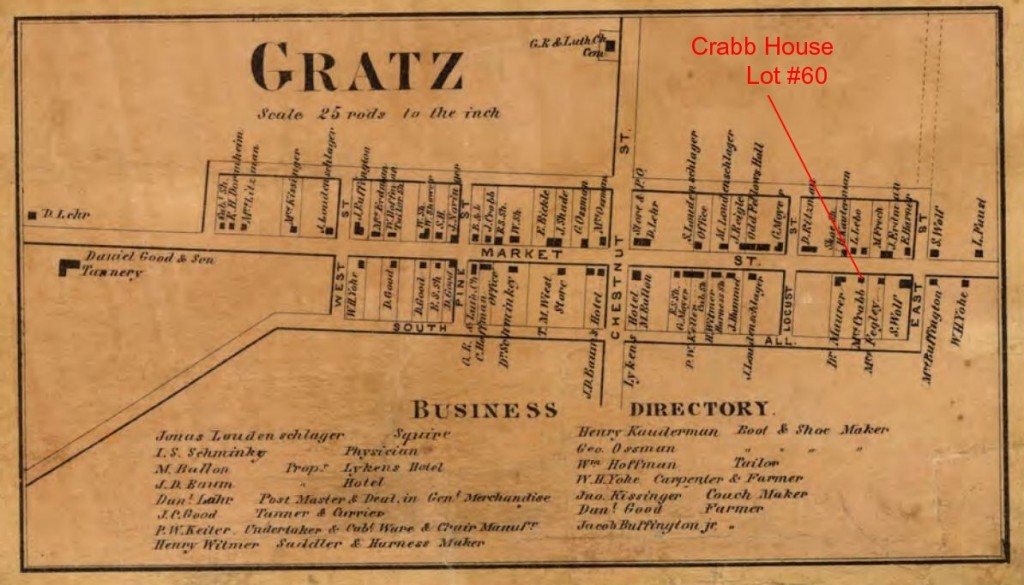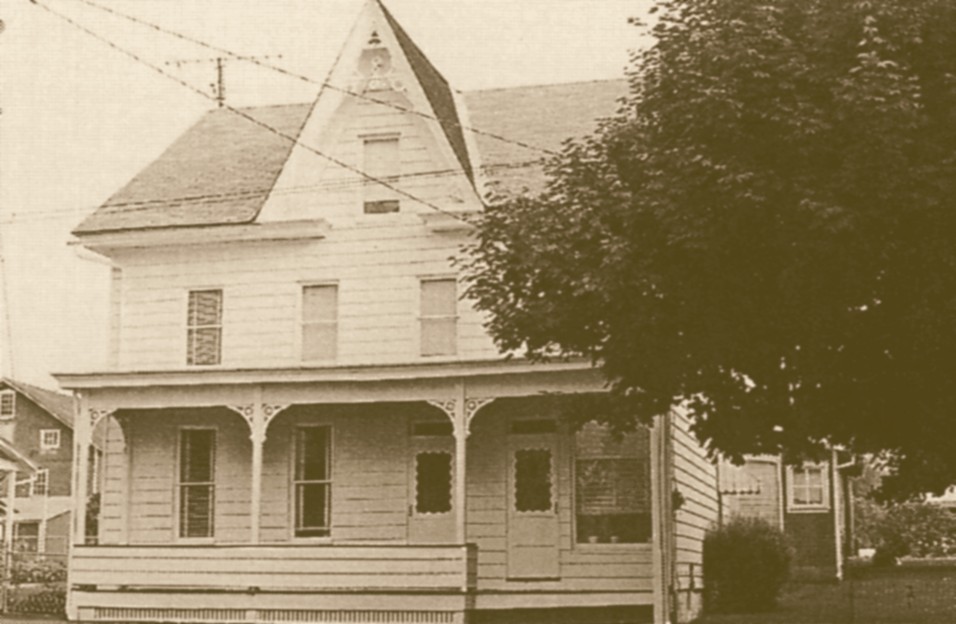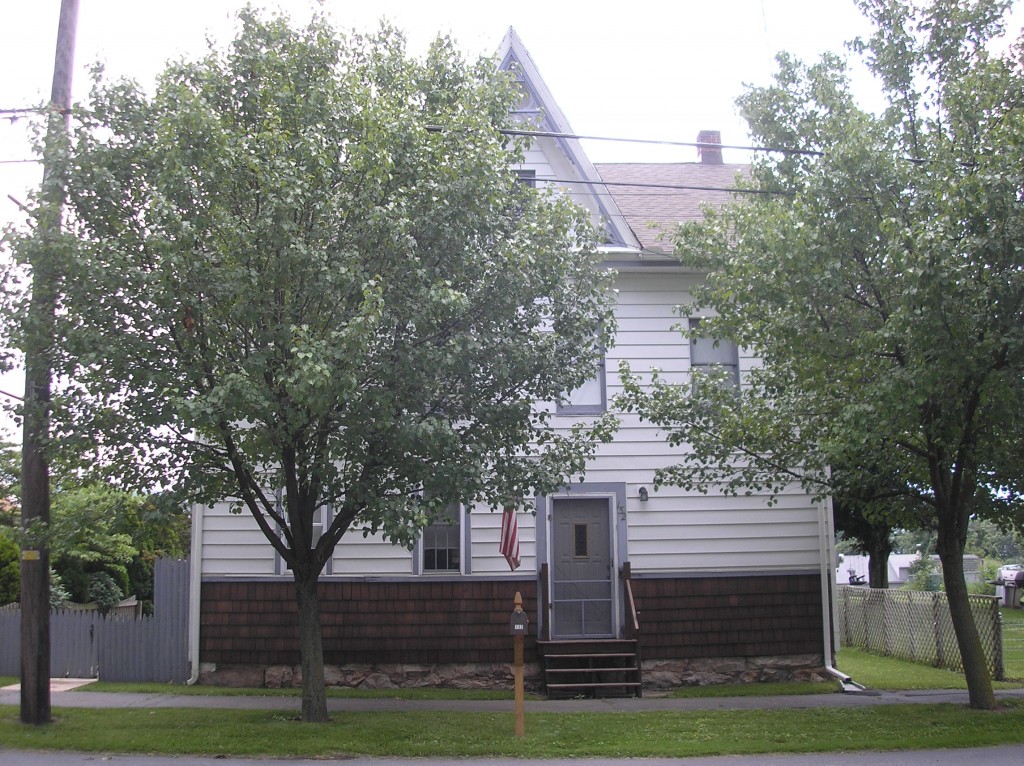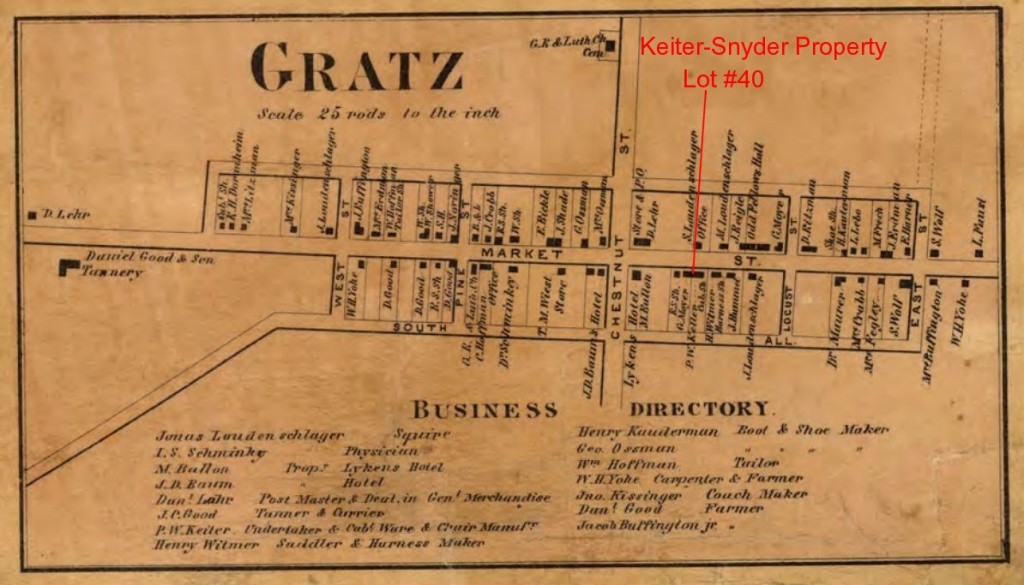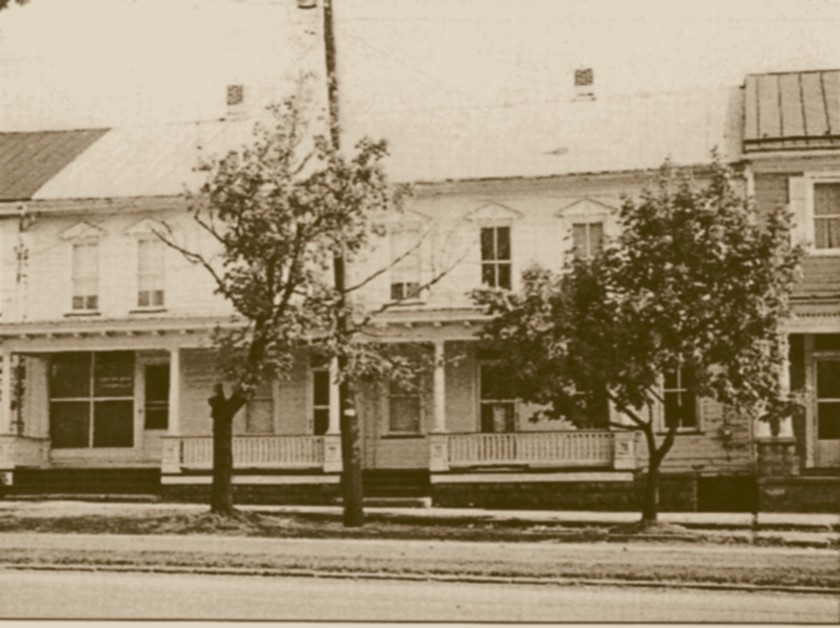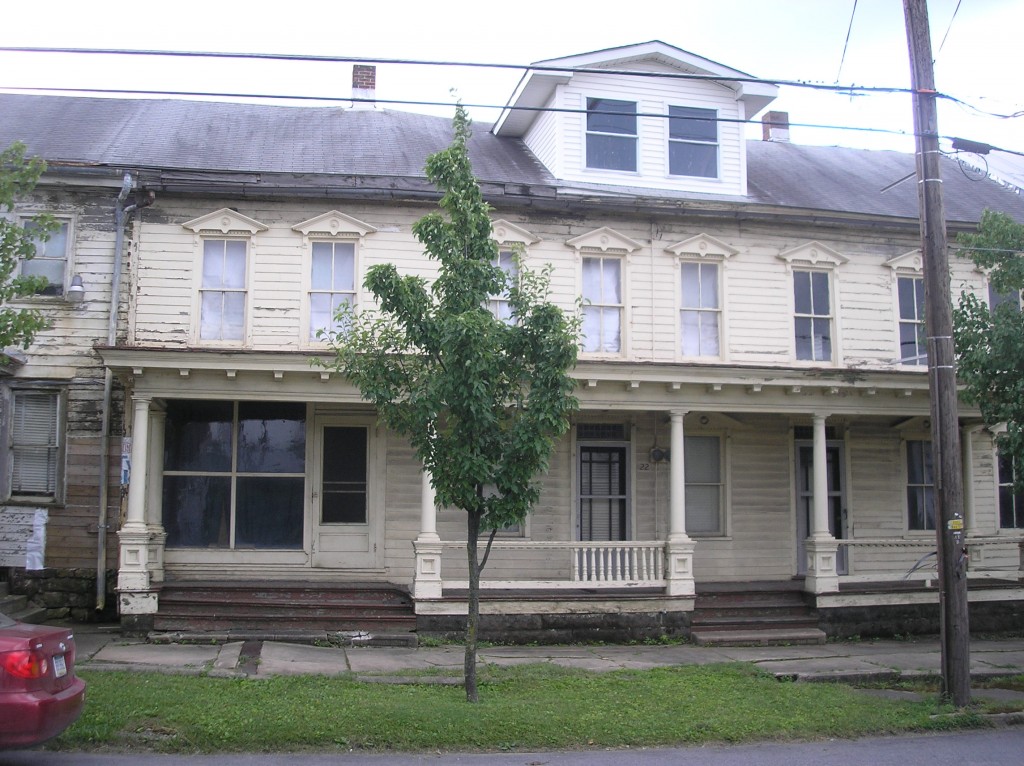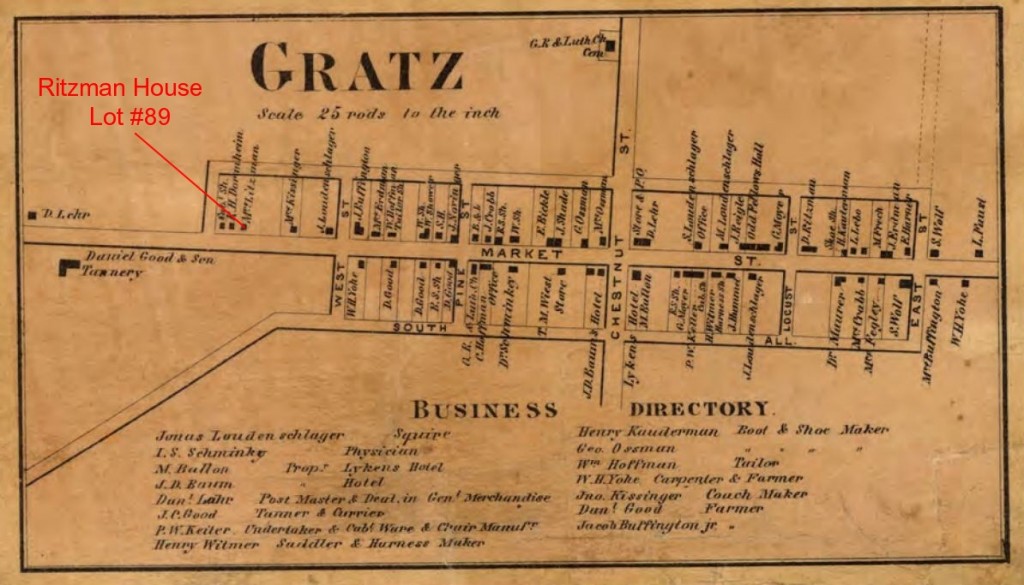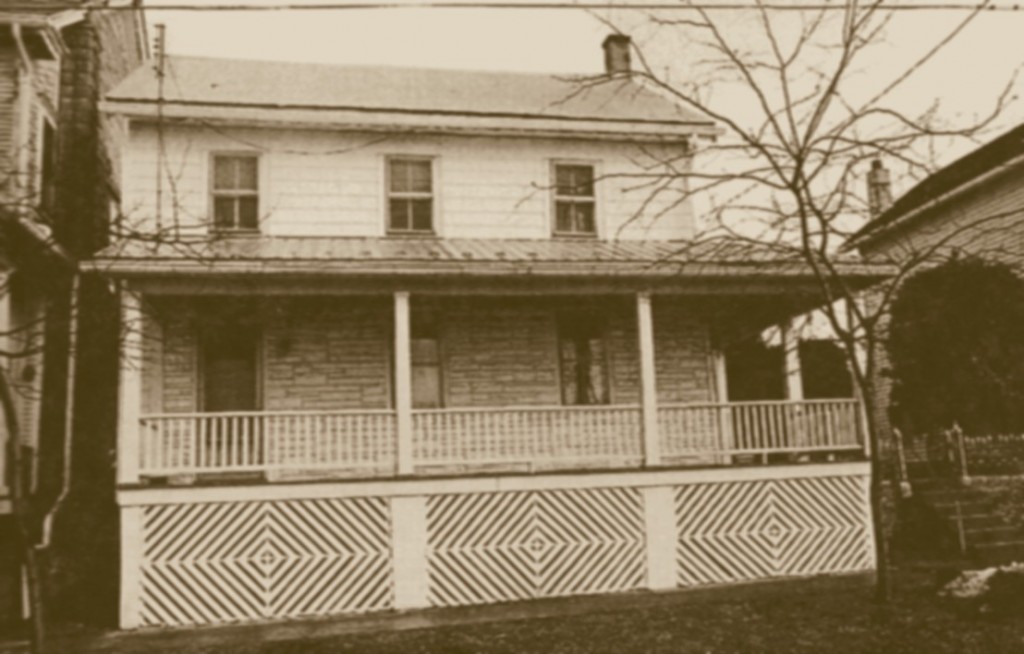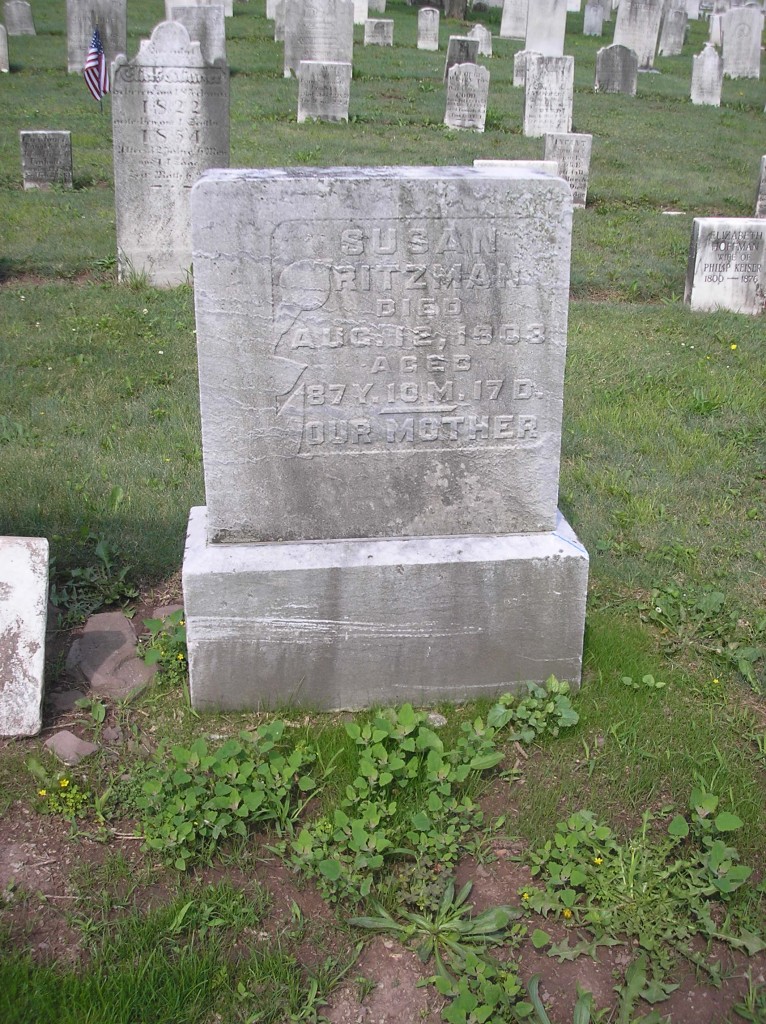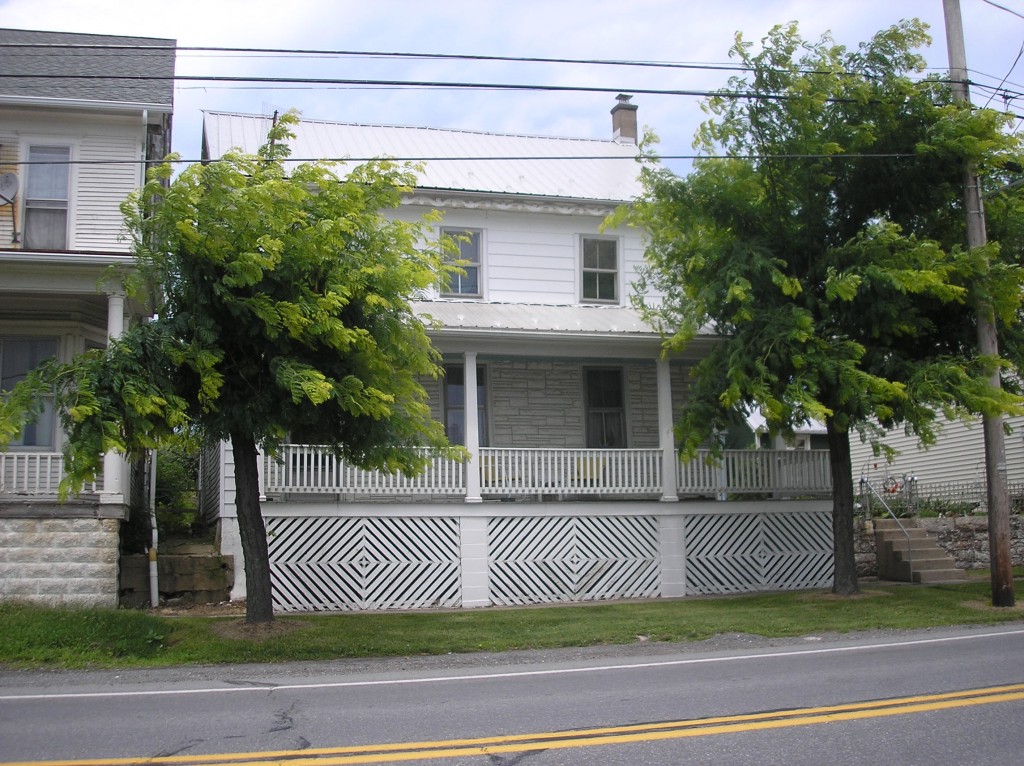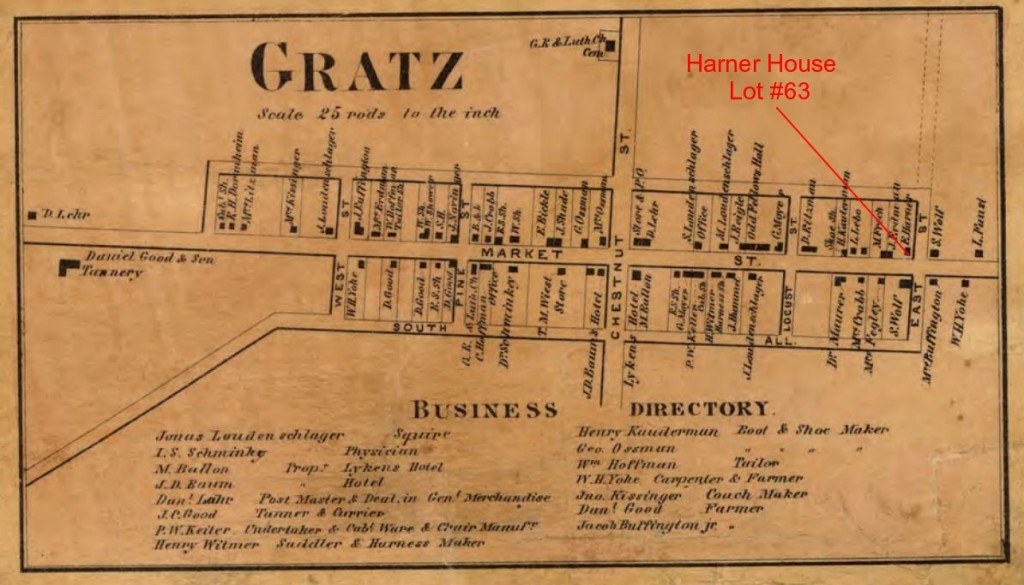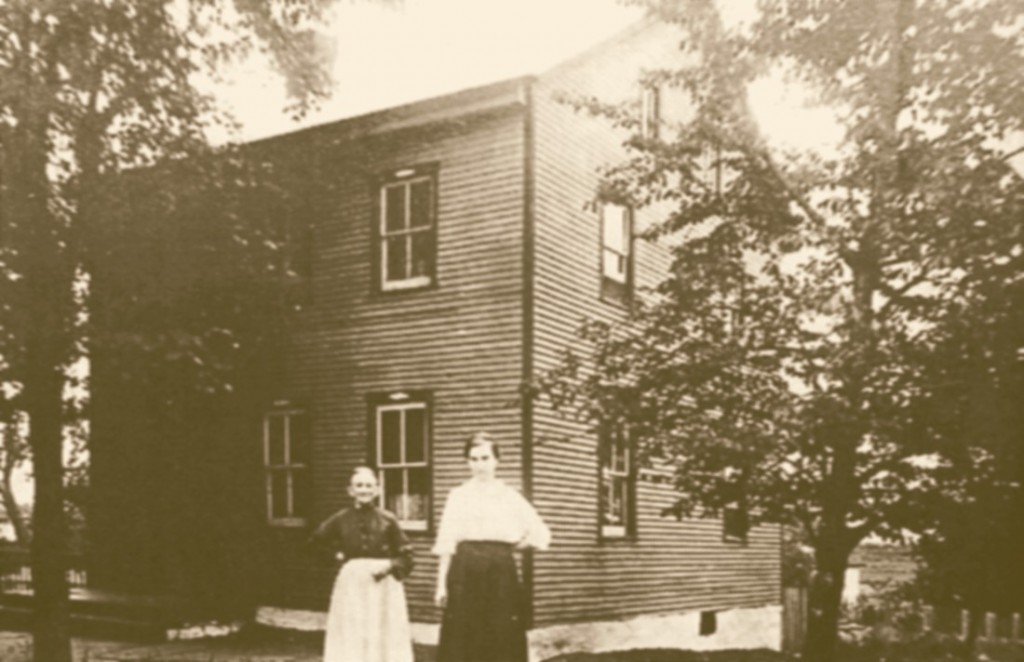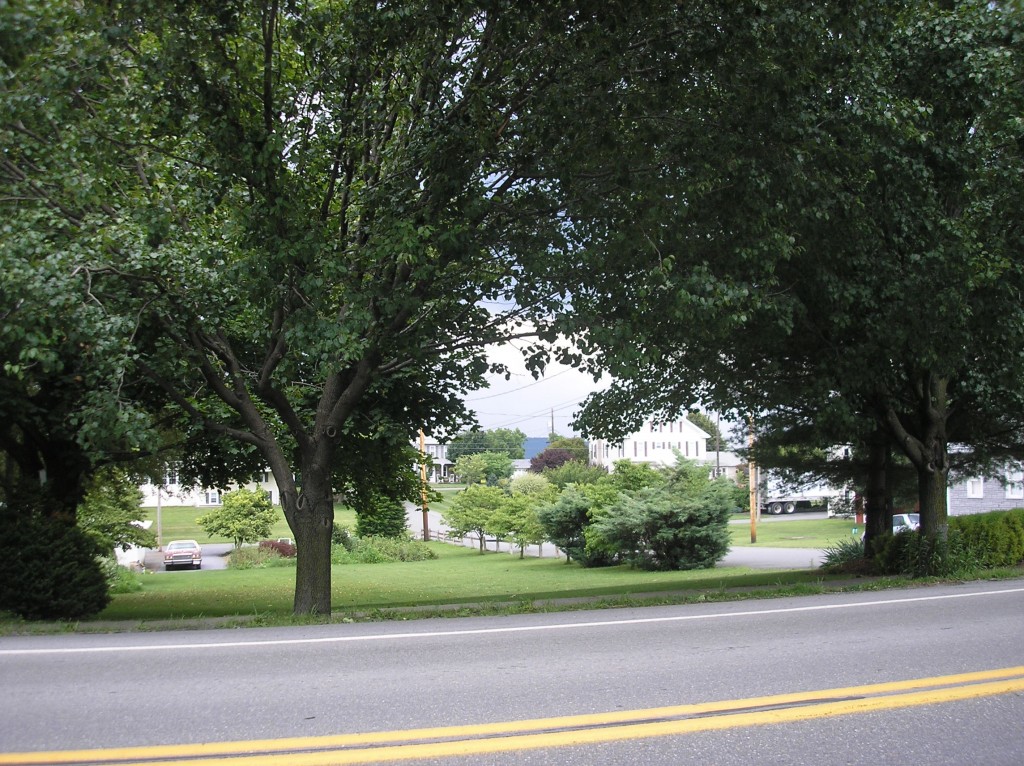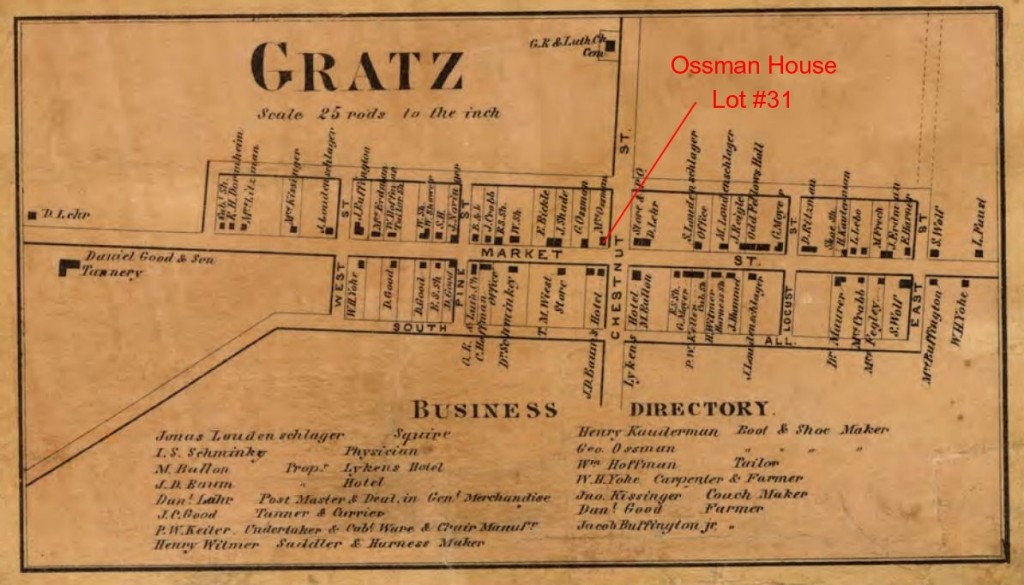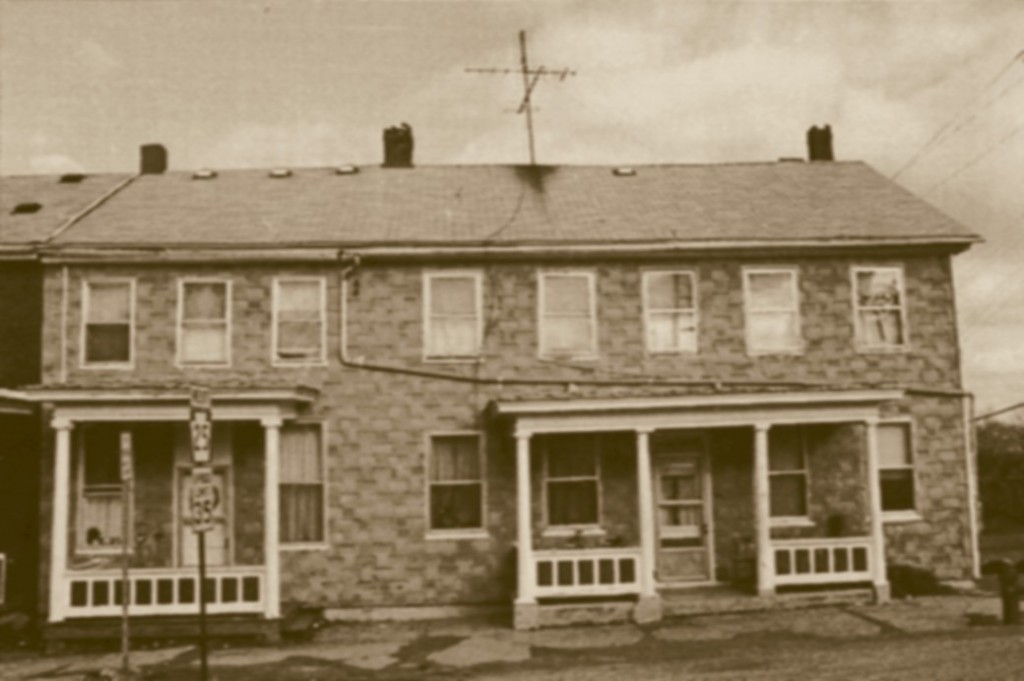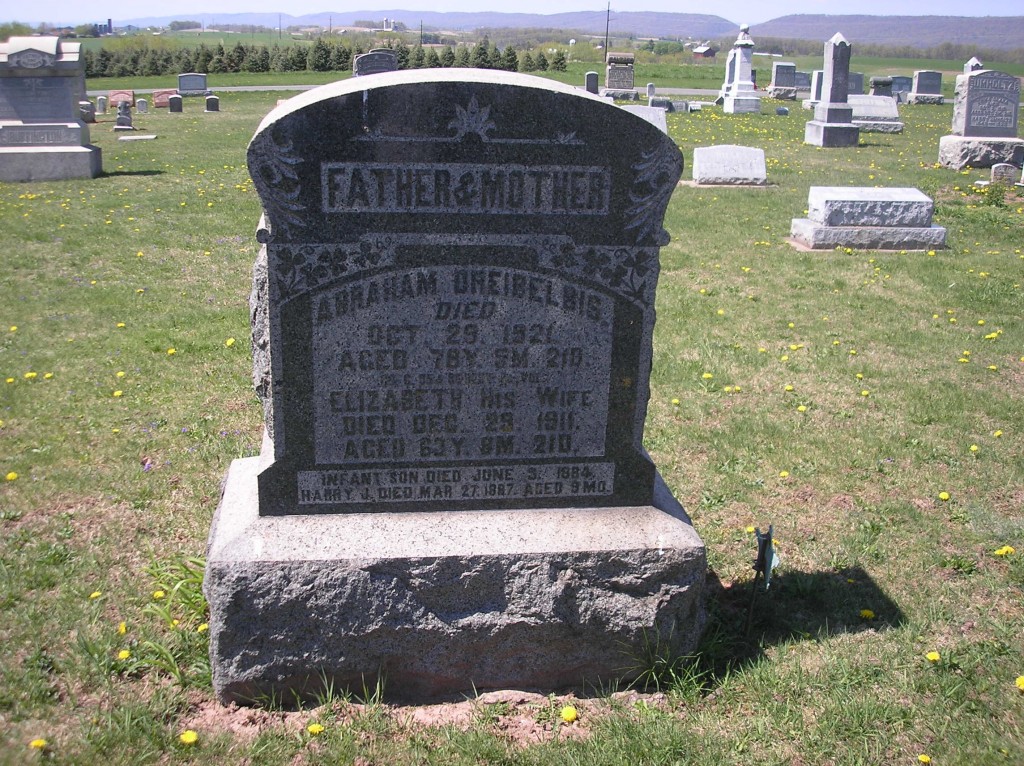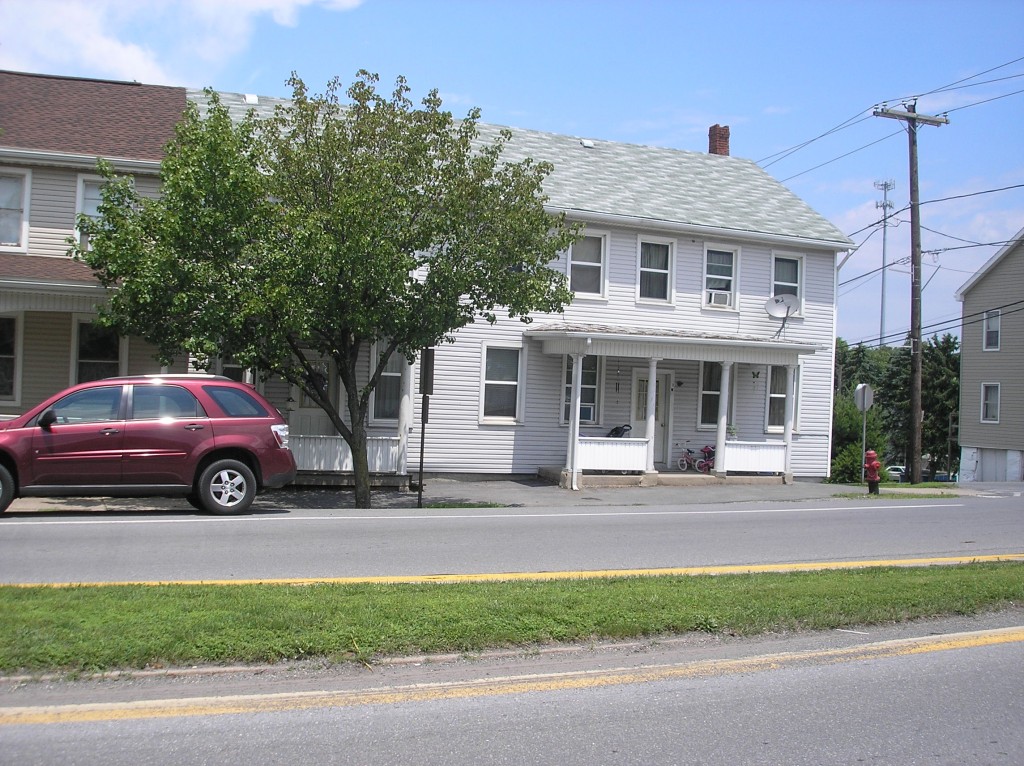Gratz During the Civil War – Crabb House
Posted By Norman Gasbarro on September 22, 2012
The current house on Lot #60 is not the house that was on this property at the time of the Civil War. The original house, believed to be of only one story was built before 1850 and appears on the 1855 and 1858 tax records.
The oldest picture of the current house (pictured above) is from the 2nd half of the 20th century.
After the Gratz family sold this lot, it remained in the possession of William H. Yohe and his wife Annie Yohe until the Civil War years. The trail of ownership is difficult to follow because a piece of adjacent Lot # 58 was sometimes sold with it.
Lydia [Schoffstall] Crabb, the wife of Henry Crabb, was supposedly iving in Williamstown when she owned the original house that was here. Her second husband, Joseph Witman, who she supposedly married during the Civil War, was living in Gratz in 1860. Joseph Witman was a Civil War veteran. Lydia’s son, William Crabb, was also a Civil War veteran. There is a great deal of confusion about the death date of Henry Crabb – his stone in the Gratz Union Cemetery indicates he died in 1865, but other sources give the date as 1856. Whether Lydia had a child with Witman before Henry Crabb died is not certain. Lydia is buried in the Gratz Union Cemetery in the Crabb family plot – as “Lydian wife of Joseph Witman.” Lydia’s son, William Crabb, received the property in a transaction in 1872 and conveyed it back to his mother, who at the time was named as “Lydia Witman.” At the time, William Crabb also owned the lot next door, Lot #58. After Lydia died in 1873, her heirs sold the property to Jonathan A. Umholtz.
Jonathan A. Umholtz (1848-?) was a farmer and a director of the Gratz Agricultural Association. He served as postmaster of Gratz for 10 years, but in 1885, he left the area and took up the hotel business in Herndon, Northumberland County, eventually ending up in Philadelphia where he was the proprietor of a hotel and owner of cigar store.
In the early 1890s, the Gratz Bakery was established at this site by the Hess family, then owners of the house and lot. One of the specialties of the bakery was a pretzel which was sold for penny a bag.
This is part 42 of an ongoing series on Gratz during the Civil War. Some of the information for this post was taken from the book A Comprehensive History of the Town of Gratz Pennsylvania.
Other parts of the series on Gratz During the Civil War can be found on this blog by clicking on “Walking Tour.”
 ;
;
